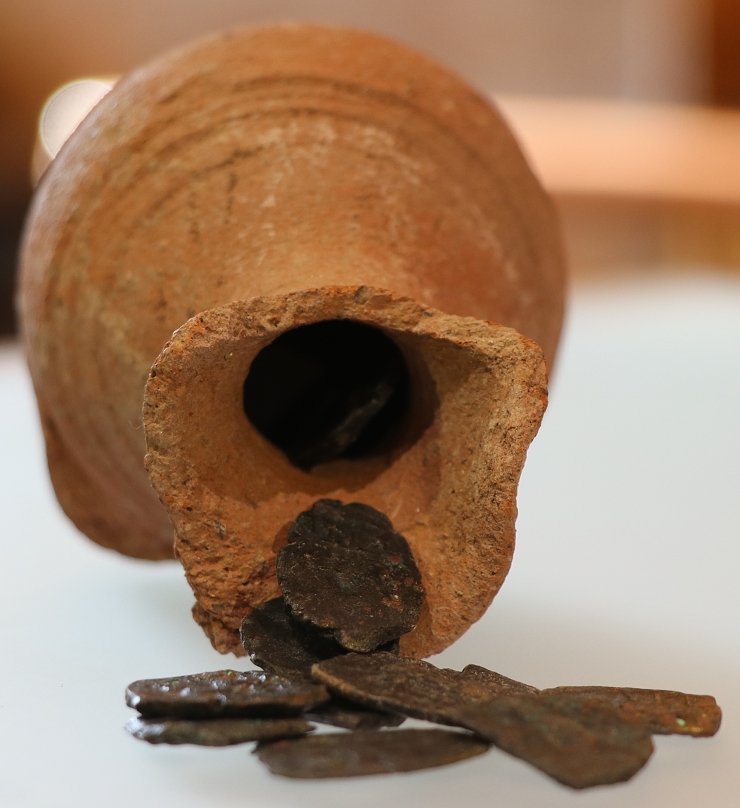Ancient coin box with coins
Categories: Minting - Numismatics , Nálezy nejenom s detektorem na blízkém východě
In Hadrianopolis, today's Turkish city of Edirne, a set of nearly 1,400-year-old coins was discovered in a ceramic jar. It is probably not a classic coin hoard - a depot, but rather a period "piggy bank" or a domestic treasure chest.
The coins were lying in a building whose function is still unproven. Inside the building, a number of ceramic vessels of various purposes as well as kitchen equipment were found. Archaeologists therefore believe that there may have been a kitchen. The building itself had been in use for at least 300, possibly up to 400 years. During that time it has been repaired, extended and renovated repeatedly. All ten coins date from its last phase, the reign of the Byzantine emperor Constans II (641-668).
The city, renamed in honour of the Roman Emperor Hadrian in the 2nd century, was situated on an original Hittite settlement dating from around 1300 BC. Due to its important location, it has repeatedly faced raids by various rulers and tribes. The city was often subject to a succession of rulers, alternately belonging to the Greeks, Bulgarians, Turks and Russians.
The place was an important centre of ecclesiastical administration. Several important religious figures lived here or came from here, making Hadrianopolis a popular place of pilgrimage. In the 7th century the city was suddenly and almost overnight completely depopulated for unknown reasons. Perhaps it was then that the small coin cup was abandoned in a hurry.
Excavations at the site have taken place repeatedly. In 2003, the remains of 14 Roman public buildings were discovered, including two baths, a theatre and two churches. Excavations in 2018 uncovered the remains of one of the oldest churches in Anatolia, dating from the 5th century. Among other things, its beautiful and world-famous mosaic floors have been preserved.
A recent discovery from last year's excavations offers insight into the last phase of the building's use and provides valuable information about ancient domestic practices. The excavations, led by Ersin Çelikbaş of Karabük University, focus on the historical layers of the ancient city from the late Chalcolithic, through the Roman and early Byzantine periods. According to him, the discovery is the intersection of archaeology and the daily life of the inhabitants of Hadrianopolis in the 7th century AD.
Roman Nemec
Sources: dailysabah.com, thehistoryblog.com



what Hadrianopolis looked like in the 7th century
The article is included in categories: